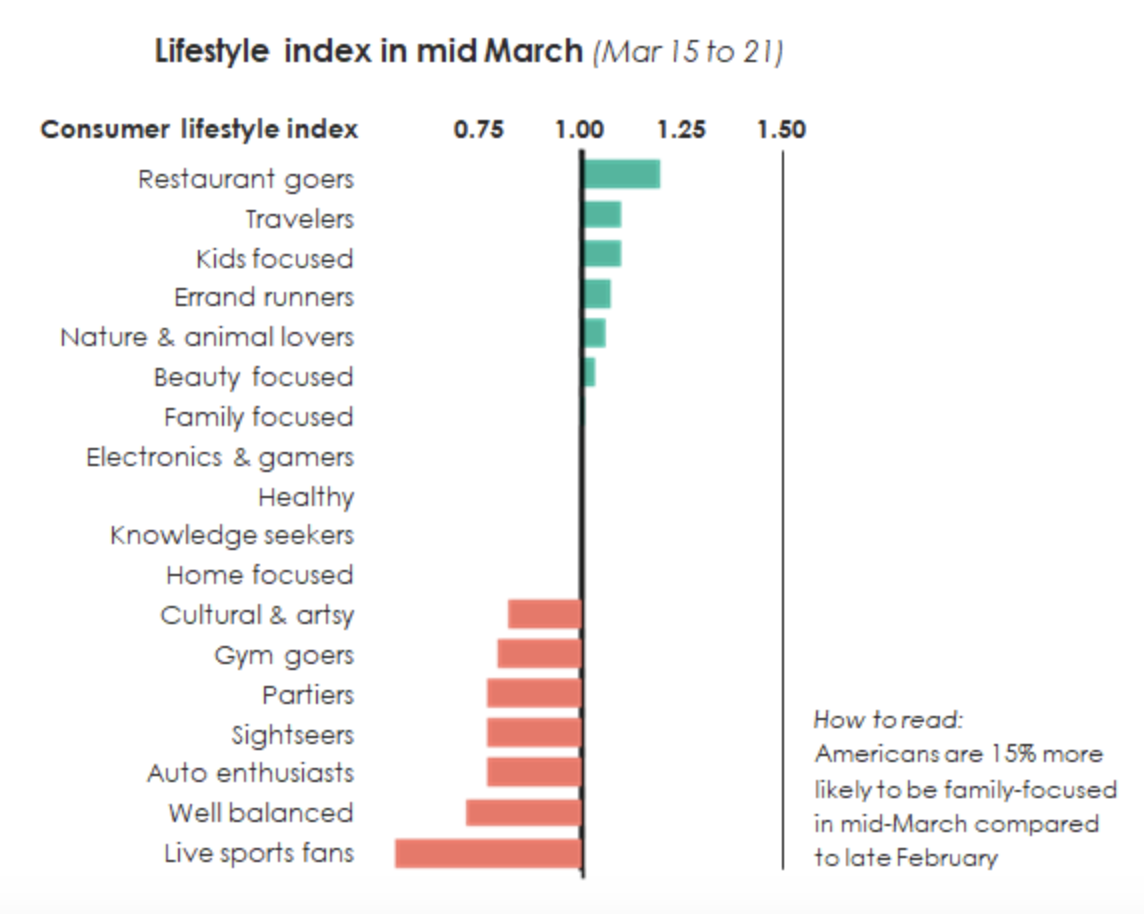Share of voice matters more than ever. Focus on purpose and be empathetic. Be useful. These mantras are being echoed every day in the industry press. And they are true. Now is the time to drive share of mind through share of voice and for brands to be at their most useful, purpose driven and empathetic. But it is also the most important time to understand consumers, their new temporary patterns and how and when they are interacting with brands and content. It’s always been true that businesses that understand real human behaviour win, but this statement has never been more true than it is today, in this COVID world we all live in.
At times of economic downturn It may be tempting for brands to pull back from finding creative ways to reach and engage consumers, because people are travelling, shopping and eating out less and habits are disrupted. 86% of marketers say they are now delaying or reviewing marketing campaigns, up from 55% in early March, due to a drop in demand. But It’s also important to recognise that consumer behaviour is changing, if only temporarily.
Consumers remain consumers and it’s more important than ever for brands to stay top of mind. Brands that do so will be much better positioned once lockdowns are lifted and life returns to ‘normal’. Studies like the famous Binet and Field study in collaboration with the IPA, show that higher share of voice leads to higher share of mind, thus brands and market share grow. Lower share of voice has the inverse effect. Equilibrium is reached when share of voice equals share of mind.
As part of our ‘Changing behaviours series’ we’ve been collecting and sharing insights from around the world that can help marketers everywhere make sense of the evolving situation and draw inspiration for new strategies.
While consumers are more likely to be working from home and therefore less exposed to traditional media channels like OOH, Blis analysis is showing that mobile usage is increasing globally. With this increase, we’re seeing that consumers are generally more engaged with mobile, especially in-app, as well as audio, streaming and gaming, across different devices. This data is supported by Neilson’s recent US findings that mobile usage is up 60% and mobile app and web usage has increased from two-and-a-half to almost four hours per day.
Not only that, engagement with certain types of apps and content is on the rise. Globally, we’ve seen video views and completions rise dramatically during March:

App usage in the UK alone has increased by 70.1%, led by news and gaming content:
- News content consumption has increased by 20-25% vs just one week ago, with peaks between 7-8am and 5-6pm.
- Gaming content consumption has grown by 41% in March compared with February, with peaks between 8-11pm.
This indicates a huge opportunity for in-app advertising with the right type of message and tone, when people are relaxed, receptive and kicking back.
Looking at lifestyle changes as well, we’ve seen a noticeable shift of focus towards family, errands and essential goods (groceries, medications) and essential travel, as you’d expect, given the lockdowns. Purchase decision-makers are also likely shopping alone, instead of in groups or with family members when they do go out. The implication for brands is that these shifting behaviours provide a newopportunity to be relevant and useful or to offer convenience to consumers, including retargeting shoppers in their home environment with the right message at the right time.

Amidst these changing behaviours and lifestyles, there are abundant opportunities for companies to serve hyper relevant ads to receptive audiences based on historical behaviour patterns, to drive engagement based on targeting people at home. For brands looking to engage, we see the highest opportunity areas are for brands to focus on mass news consumption, e-commerce, social messaging and gaming.
For gaming content in particular, the key window is 1-2am. This means brands can be laser targeted in terms of time slots to ensure they are targeting the at-home consumer at the right time with the right message. For news, there is a huge opportunity for brands to be more brave, pivot messaging and also to support quality journalism by advertising near digital news content. Because the news has become even more central to our daily routines, publishers are seeing record numbers of consumers viewing COVID-related news content, indicating that perhaps marketers shouldn’t shy away from advertising next to COVID-related content – especially if what they are advertising for is relevant and useful information for consumers.
With consumers at home in a more receptive mindspace to engage with brands, opportunities also abound for brands to tell rich and immersive stories that reach the right audience. It’s also a time to deliver branding messages that comfort and bring consumers to a higher purpose and sense belonging at this moment in time.
Additionally, right now, the ‘noise levels’ in nearly every category are likely to be down, so brands have the opportunity to find ways to engage with their consumers in ways that are purpose-driven, useful, educational and entertaining to help stay top of mind now and maintain loyalty once the crisis is over.
In life, we always remember the people who are there for us in good times and bad, and we’ll surely remember and reward the brands who were there for us too.
To read more from MAD//Insight click here.


